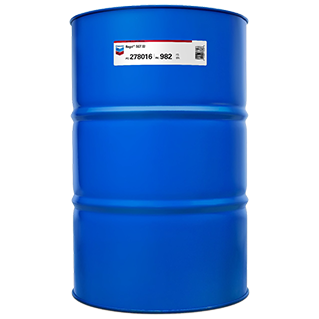 Regal® SGT 22 is designed for use in modified aviation type gas turbines in non-aviation stationary applications such as industrial power generation and marine service. Regal SGT 22 is formulated with synthetic polyol ester base fluids in combination with an advanced additive design offering high temperature system protection and oxidation resistance.
Regal® SGT 22 is designed for use in modified aviation type gas turbines in non-aviation stationary applications such as industrial power generation and marine service. Regal SGT 22 is formulated with synthetic polyol ester base fluids in combination with an advanced additive design offering high temperature system protection and oxidation resistance.
Regal SGT 22 is recommended for aero derivative gas turbines exposed to severe operating environments in non-aviation applications such as industrial power generation, gas transmission and marine propulsion.
U.S. Military Specification MIL-PRF-23699G, Class STD
General Electric LM Series Aeroderivitive Turbines
Siemens (Allison) 501K
Siemens (Rolls Royce) Avon, Olympus, Tyne and Spey models
Siemens (Rolls Royce) RB 211 Gas Turbines
Turbomeca Makila TL
1. Long Service Life
Good oxidation and thermal stability of the synthetic ester base fluid and special additive system helps resist oil breakdown under severe high temperature and high load conditions. The low volatility of the synthetic polyolester helps minimize evaporative losses.
2. Minimal Maintenance and Downtime
Minimal coking tendency of the synthetic ester base fluid and additive system helps minimize deposit formation on bearings and other areas exposed to the heat of the hot gases. High load carrying capacity helps ensure protection against wear. The oil is compatible with normal engine and accessory metallic construction materials and elastomeric sealing compounds.
3. All-Temperature Performance
Viscosity-temperature characteristics of the synthetic ester help promote low temperature fluidity to facilitate starting at low temperatures, while helping to ensure that an effective lubricant film is available under the most severe, high temperature conditions to protect.
